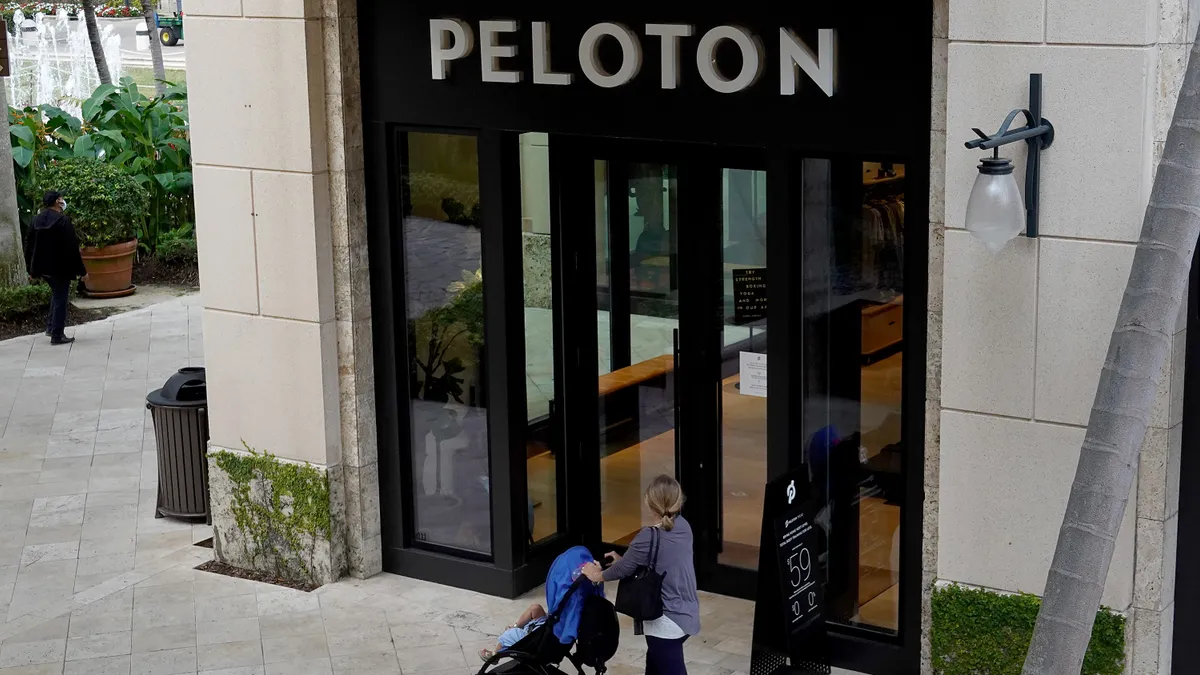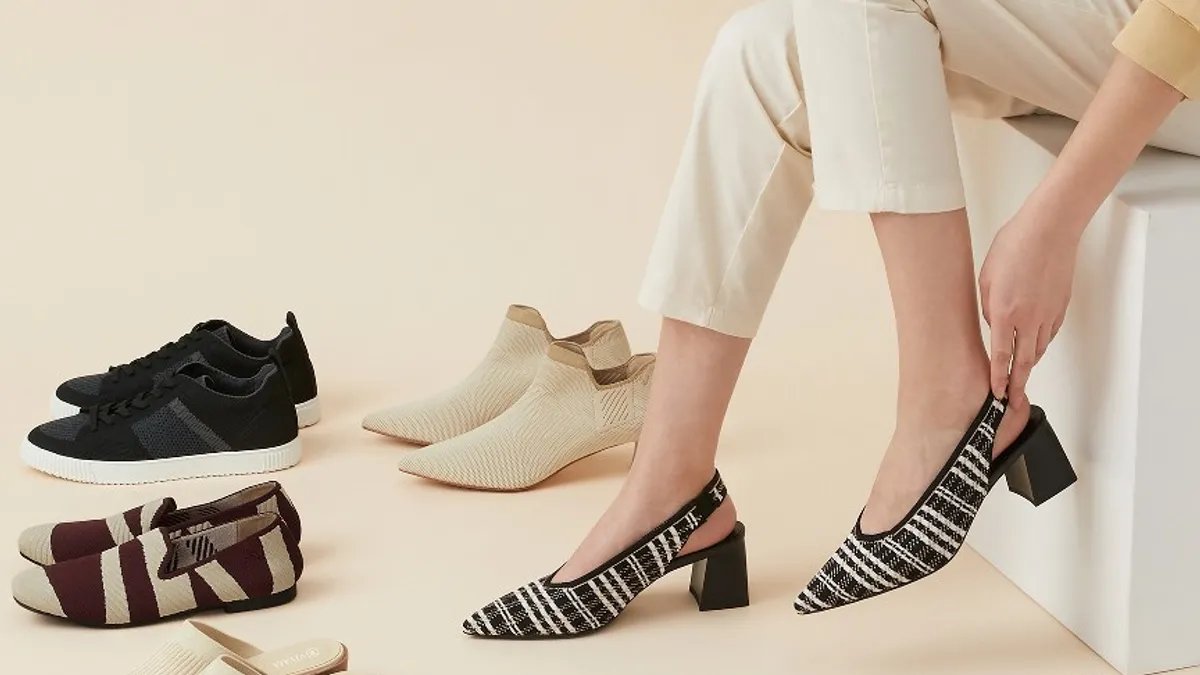This week, two promising direct-to-consumer brands suffered major setbacks.
Grooming company Harry's learned that Schick maker Edgewell is dropping its bid to take it over, in light of a challenge from the Federal Trade Commission on antitrust grounds. And online consumer goods company Brandless on Monday abruptly shut down, reportedly as major venture capital investor SoftBank pulled back on promised funding based on yet to be realized growth targets, according to The Protocol, which broke that news.
The two differ in key ways. Harry's specialized in a niche that was ready to be disrupted, is a profitable business (according to its co-founders) and gladly partnered with retailers to get its wares to customers. Brandless, meanwhile, threw the book at consumer goods retail, beginning with packaged goods and eventually expanding into other categories like baby products and home goods. The company followed a self-distribution model based on the premise that it could offer cheap prices by cutting out the middleman.
But the brands' stumbles in recent days, which for Brandless look to be fatal, have much in common — notably, an inability to scale on their own. And they reveal limits of direct-to-consumer retail that investors and analysts may just be starting to appreciate.
A swing and a miss
Harry's co-founders and co-CEOs Jeff Raider and Andy Katz-Mayfield, expressing disappointment in Edgewell's abandonment of their deal, said in comments emailed to Retail Dive that they are "growing, profitable, well capitalized and excited about the opportunities ahead for our business."
But not all analysts record consistent profits for the shaving brand. In a Feb. 5 client note, for example, DeutscheBank researchers noted that, "while Harry's was not profitable, it will likely seek financing from other sources to continue to expand both in the US and internationally."
Furthermore, those "other sources" themselves may be looking more closely at ventures that continue to rely on investment, rather than their own operations, to carry on.
"The pendulum has swung."

Adam Spivack
Principal, Comcast Ventures
"The pendulum has swung," Adam Spivack, principal at venture capital firm Comcast Ventures, told a National Retail Federation audience in January regarding VC expectations, noting that it's become easier to launch a direct-to-consumer company than to grow or sustain one.
Along with mattress darling Casper — which threw a lot of cold water on investor enthusiasm for DTC retail when it disclosed just how distant profits are — the fate of Brandless is a prime example of that swing. The company launched in 2017 with an audacious pitch: Each of its items was only $3, thanks to the company's elimination of what co-founder Tina Sharkey called a "brand tax," the markup piled on by marketers and retailers. Brandless claimed that going direct to the consumer saved some 40%, which was passed along to its customers.
In 2018, SoftBank's venture capital arm (famous for its investment into WeWork) pledged $240 million, ballooning Brandless' coffers, feeding its expansion into new categories and category segments like clean beauty and experiments like pop-ups.
A little over two years on, the brand really is "brandless," with only a lone farewell message on its site as of Tuesday.
What's new?
For all the props they get for "disruption," most direct-to-consumer brands aren't all that revolutionary.
"'Direct-to-consumer' is just a distribution point, that's all," Chris Walton, consultant and CEO of Omni Talk told Retail Dive in an interview. "It's just a new way of talking to the consumer. I would put Away and Casper in the same bucket — at the end of the day, they're not anything different than what we've seen before, so we've got to be rational in the valuation of these companies against what the comps are."
Brandless, in particular, didn't really have a reason to exist, according to Paula Rosenblum, managing partner at RSR Research.
"The challenge with operating as a pure play is getting your name out there. That requires a boatload of marketing expense or somehow catching the eye of the media."

Paula Rosenblum
Managing Partner, RSR Research
"The challenge with operating as a pure play is getting your name out there. That requires a boatload of marketing expense or somehow catching the eye of the media," she told Retail Dive in an email. "This company did neither as far as I can see. A brand like this should also do wholesaling to get their name out there."
Price ends up being a tempting differentiator at many DTCs, but price is fairly easy to compete with or market against and expensive to keep up. Not to mention that "always low prices," the favored tagline at the largest retailer in the world, Walmart, isn't exactly earth-shattering.
"Harry's started online and was pretty much forced to become a multichannel wholesale business. Their low prices could only exist because of wholesale," Richie Siegel, founder of retail consultancy Loose Threads, told Retail Dive in an interview. "Brandless, on the other hand, tried to stay retail and their whole thing was low prices."
Brandless had an especially steep hill to climb, in part because it was so wedded to its price message, which got muddled as it departed from its $3 price point, experts say. And because retail stalwarts Trader Joe's and Costco, which have superior points of distribution and marketing, already offer "brandless" brands at attractive prices, notes Walton.
"Are you a consumer product brand or are you a retailer?"

Chris Walton
CEO, Omni Talk
"Are you a consumer product brand or are you a retailer? Harry's clearly is a product brand, it always has been, so they sold through Target and Walmart. Whereas Brandless had a hard time really saying what it was," he said. "We have to be able to say what is it that they're doing that's unique, and price is not necessarily a factor in that discussion. It could be, depending on how they stack up in the speed and convenience game too."
Indeed, Siegel calls Brandless and even Harry's, along with other direct-to-consumer brands like Bonobos or Away, "better branded private labels."
"It's like when AmazonBasics started, and Target is again waking up to it now," he said. "The press that these [DTC] companies get creates such an outsized perception, but when you look under the hood I would say it was not all that unique of a value proposition."
True value
While price may be an under-appreciated crutch for many direct-to-consumer brands, they do tend to please customers with superior responsiveness and service.
That relationship, which is supported by data from and communication with customers directly, is likely why Edgewell last year was willing to plunk down nearly $1.4 billion to buy Harry's in the first place, and, before that, why consumer products giant Unilever bought Dollar Shave Club for $1 billion nearly four years ago. The idea behind both newcomers was widely seen as a walk-back of a men's shaving market that relied on selling razors on the cheap, and blades at a premium. But that isn't it, according to Walton.
"I think the disruption is really that both Harry's and Dollar Shave found a different way to speak to the consumer, that's what you're really buying from those companies," Walton said. "Whether what you are paying for is the blade or the razor, I don't think is as material. That will ebb and flow over time. It's more the one-on-one relationship that DTC affords."
I don't think you can be too customer-obsessed — but I don't think these brands are unique in that, and some do it more than others."

Richie Siegel
Founder, Loose Threads
But Siegel doesn't believe that proposition is unique to DTC. "I think there's definite value to it — I don't think you can be too customer-obsessed — but I don't think these brands are unique in that, and some do it more than others," he said, singling out Glossier as a brand that does a good job of calling out customer feedback as it iterates its merchandise. "Just because you declare that's your business model, it still takes a lot of focus to do it. I would never argue against it. But you really just mean you're listening. It's more of a choice and a mentality than a business model."
Indeed, legacy retailers can turn to that page of the DTC playbook, according to Magid Senior Vice President of Retail Matt Sargent. He believes that Target in 2018 may have noted what Brandless was up to when it developed an affordable private consumer goods label that resembles the startup's products.
"Target was able to look at Brandless and see that there were aspects that were resonating with consumers," he told Retail Dive in an interview. "It's a time for a lot of these existing brands to figure out how to respond. Their relationship with their customer, to me that's fertile ground."
"Even the ones we think are successful — how sustainable is direct to consumer? It's a great question to keep asking."

Matt Sargent
Senior Vice President of Retail, Magid
The fate of Brandless seems clear, less so Harry's. But most if not all direct-to-consumer brands are likely grappling with the realities of customer acquisition, the challenge of turning a profit and a need to stand on their own.
"Even the ones we think are successful — how sustainable is direct to consumer? It's a great question to keep asking," Sargent said. "There's a ton of money that's been pumped into these guys. Is this the next bubble? If it is, that's where we're going to see quickly those that haven't developed a strong relationship with their customers."






















